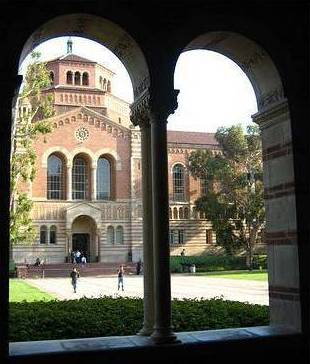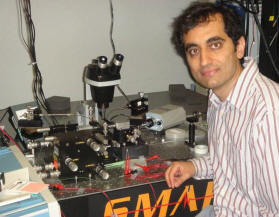|

UCLA Chancellor’s Award for Postdoctoral Research to Dr. S. Fathpour
Coverage in the spring 2007 issue of UCLA’s Graduate Quarterly
If optics and electronics could be merged on the same
microchip, the outcome might be faster, smaller, and cheaper computers and
Internet networks. Sasan Fathpour has been working to remove the biggest
hurdle to this achievement: Silicon, the bread-and-butter material of the
electronics industry, becomes opaque at high optical powers. So that light
can pass through, a diode has to be attached to the optical components to
vacuum out the blocking electrons—with an unacceptable increase in the
electrical power dissipation of the chips. Working with a team of
researchers, Dr. Fathpour has found an innovative and clever way to hook up
silicon so that the lost optical energy is not wasted as heat but actually
harvested into useful electrical power. In other words, instead of using
electrical power to clear the material standing in the way of light travel,
the device actually generates electrical power.
Inspired by a couple of “wonderful high school physics teachers,” Dr.
Fathpour got an engineering degree at Isfahan University of Technology in
Iran. “I found the field more practical—making real things and getting them
to work,” he says, but he never lost that initial interest in physics. He
earned a master’s degree at the University of British Columbia, researching
on the physical modeling of transistors, and a doctoral degree at the
University of Michigan, with a thesis on high-performance quantum dot lasers
and spin-polarized light sources.
The emerging field of silicon photonics caught his attention, and UCLA has
one of the leading research groups in this field. Besides its first-rank
research, UCLA has an atmosphere that is “lively, friendly, and fun,” Dr.
Fathpour says. “Certainly the landscape and the weather play a part,” he
says, “but I think the spirit of the founders of the university and the
people they put together is the most important factor.”

|